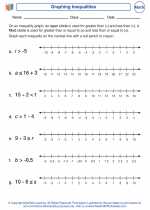Equations
An equation is a mathematical statement that shows the equality of two expressions. To solve an equation, you need to find the value of the variable that makes the equation true.
Linear Equations
A linear equation is an equation of the form ax + b = c, where a, b, and c are constants, and x is the variable. To solve a linear equation, isolate the variable on one side of the equation by performing inverse operations.
Quadratic Equations
A quadratic equation is an equation of the form ax^2 + bx + c = 0, where a, b, and c are constants, and x is the variable. To solve a quadratic equation, you can use methods like factoring, completing the square, or using the quadratic formula.
Inequalities
An inequality is a mathematical statement that shows the relationship between two expressions, where one is greater than, less than, greater than or equal to, or less than or equal to the other.
Linear Inequalities
A linear inequality is an inequality of the form ax + b < c or ax + b > c, where a, b, and c are constants, and x is the variable. To solve a linear inequality, you can use similar methods as solving linear equations, but you also need to consider the direction of the inequality sign.
Quadratic Inequalities
A quadratic inequality is an inequality of the form ax^2 + bx + c < 0 or ax^2 + bx + c > 0. To solve a quadratic inequality, you can use techniques such as graphing or testing intervals to determine the solution set.
Study Tips
- Practice solving equations and inequalities of different types to familiarize yourself with various problem-solving methods.
- Understand the properties of equality and inequality, such as the addition and multiplication properties, which allow you to perform operations on both sides of an equation or inequality.
- Pay attention to special cases when solving equations and inequalities, such as division by zero or taking the square root of both sides.
- Use visual aids and graphs to understand the solutions to inequalities, especially quadratic inequalities.
- Review the steps for solving different types of equations and inequalities to build a strong problem-solving approach.
◂Math Worksheets and Study Guides Seventh Grade. Equations and Inequalities
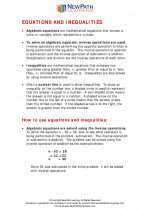
 Worksheet/Answer key
Worksheet/Answer key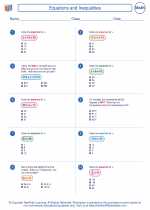
 Worksheet/Answer key
Worksheet/Answer key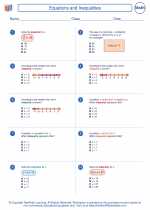
 Worksheet/Answer key
Worksheet/Answer key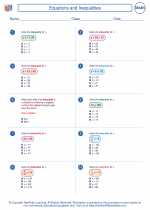
 Worksheet/Answer key
Worksheet/Answer key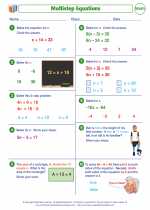
 Worksheet/Answer key
Worksheet/Answer key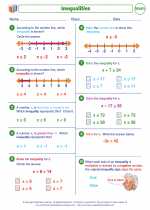
 Worksheet/Answer key
Worksheet/Answer key